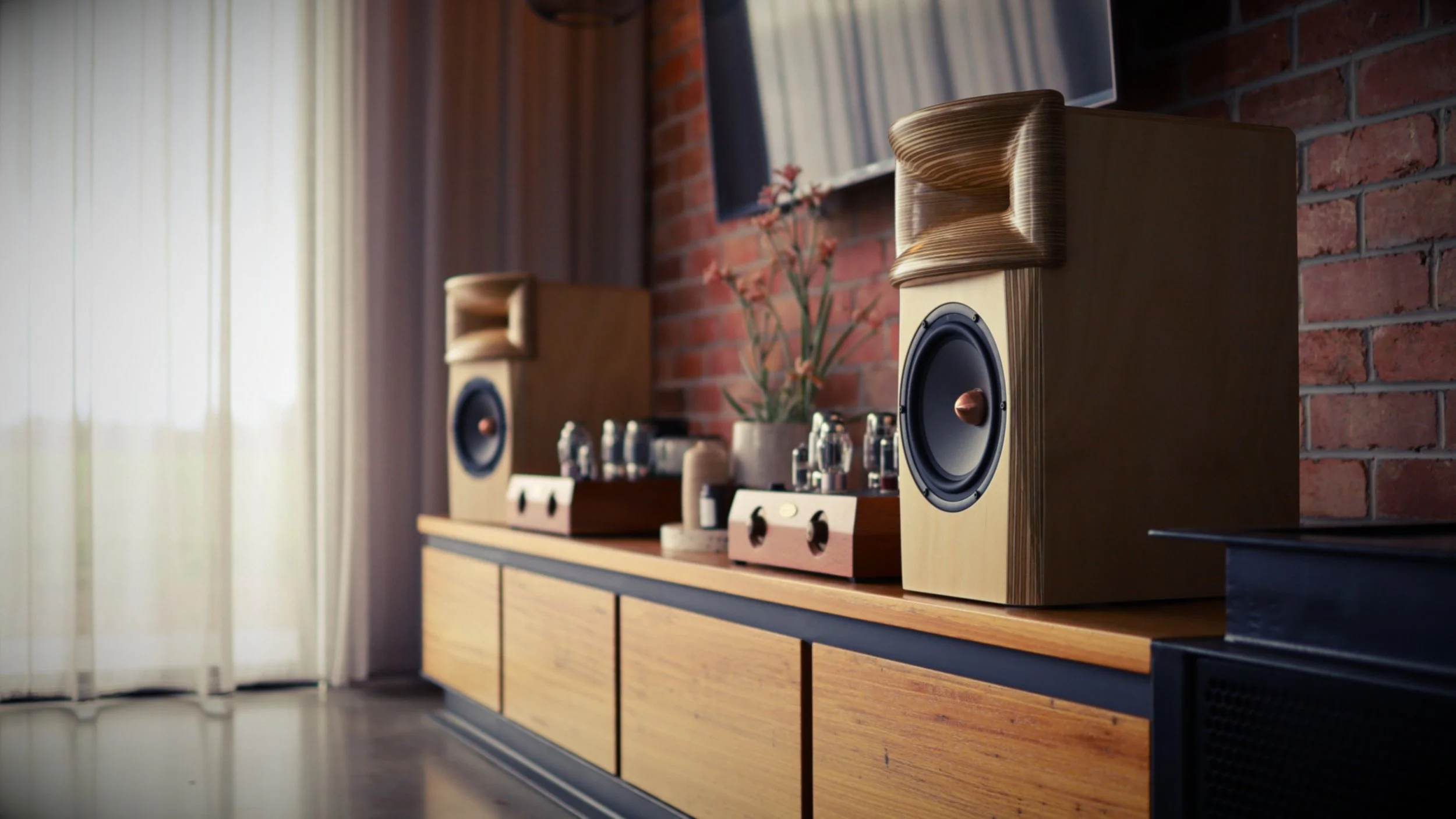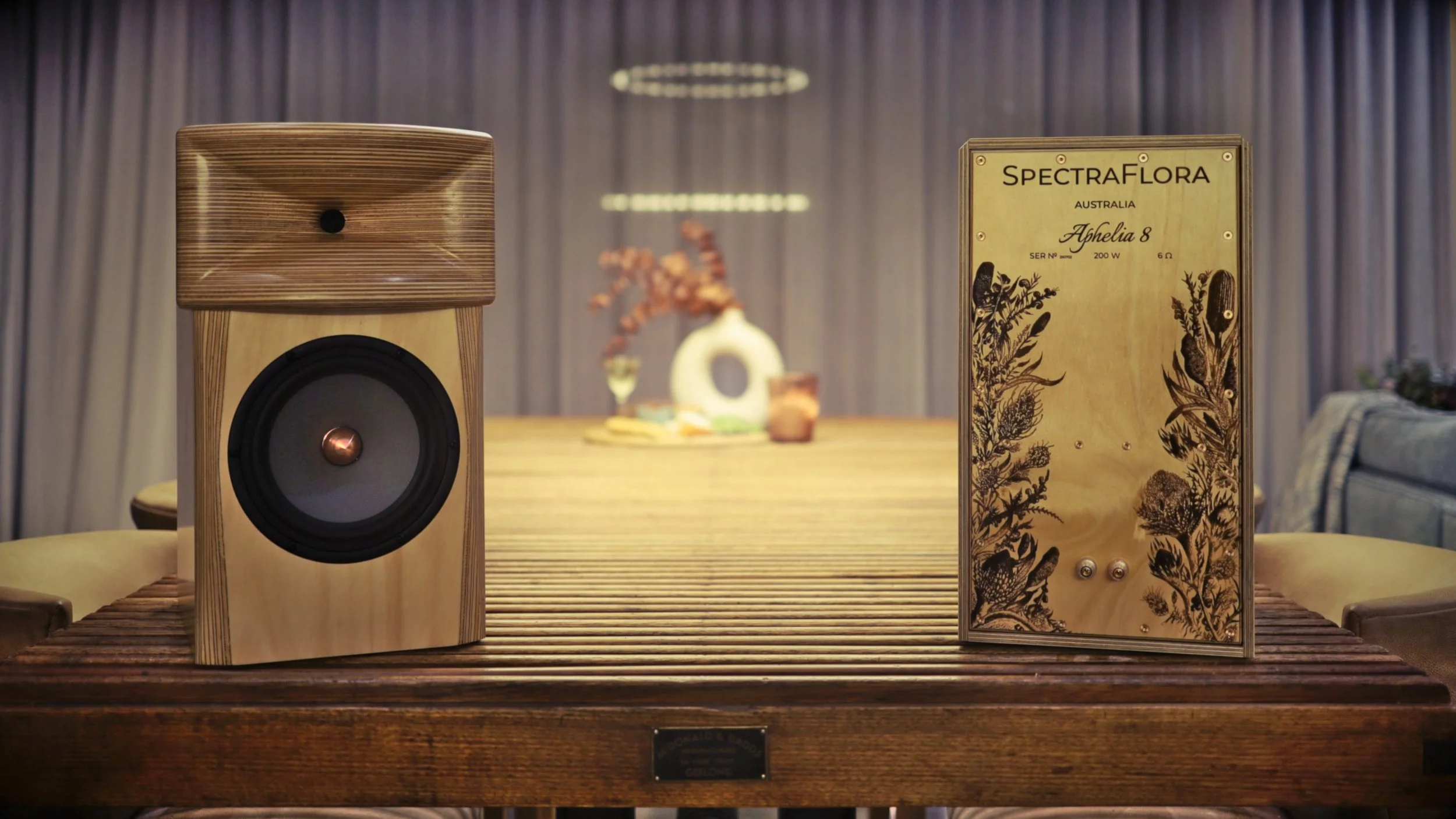
About Us
SpectraFlora’s raison d'être is to deliver natural sound—pure, lifelike, and emotionally engaging. Unlike traditional HiFi, which often chases etched detail at the expense of soul, our design philosophy centres on sound that feels real. Every note, every nuance, every transient is crafted to stir emotion and immerse the listener.
Founded by Dr Steve Van Sluyter in 2020, SpectraFlora spent four years in uncompromising research and development, free from preconceptions about how a speaker should look or function. We tested countless cabinet configurations and drivers, ultimately selecting what we believe to be the finest drivers in the world. That journey led to the creation of the Celata 88, launched in 2024, and our patent pending Dynamic Waveguide and Celata designs—innovations that deliver impactful dynamics, pristine transients, and clean, natural bass without the distortion or bloat common in conventional designs.
Soon after, we introduced the Aphelia 8, a compact speaker that inherits the Celata 88’s technology and character. Like its predecessor, it offers vivid realism, accurate off-axis response, and unmatched vocal clarity. Both models reflect our commitment to timeless design—aesthetic simplicity that endures beyond trends—and are engineered with materials and craftsmanship intended to last a lifetime.
All SpectraFlora loudspeakers are designed and built entirely in Victoria, Australia, using responsibly sourced Australian native timbers. Each speaker is a handcrafted work of art—timeless in appearance, uncompromising in build quality, and custom-finished to suit the customer’s space. Each speaker is designed to blend seamlessly into the home, not only through its refined physical presence, but through a sonic character that feels natural and unobtrusive in real living spaces.
Our products are boutique but inclusive—not just for HiFi elitists. They are for those who value artistry, originality, and sonic truth. Backed by a collaborative manufacturing process and growing national recognition among music enthusiasts, SpectraFlora has quickly earned acclaim from audio experts for breaking new ground in both design and performance.
To listen to SpectraFlora is not just to hear—it’s to feel. We make speakers to live with.
“…we had wanted to purchase the review pair rather than send them back. (How’s that for a recommendation?) After all, we had never heard such good sound—or such deep bass!—from a pair of speakers so small, room-friendly and good-looking that our better half would allow them to grace our living room’s décor, rather than banish them to our ‘audiophile den’.” Greg Borrowman | Audio Esoterica
Design philosophy
SpectraFlora grew from frustration for the lack of availability of emotive sounding loudspeakers that also looked beautiful. Four years of research and development, including many hours of listening tests and refinements have resulted in a speaker that not only sounds uniquely impressive, but also stands out as a piece of art or bespoke furniture for your home.
The Celata 88, while leveraging patent pending technology developed by us (the Dynamic Waveguide and Celata push-pull subwoofer), has also borrowed proven technologies and design from the likes of JBL and Japanese Onken Speakers.
Years of research, design, listening tests and fine tuning have allowed us to deliver a loudspeaker to the market like no other that you have seen or heard.
Our loudspeakers deliver emotive music, in a timeless format that is sure to be passed down in your family for generations to come.
-
The Dynamic Waveguide was born from countless hours of listening, testing, and rethinking what a high-frequency system should be—not just on paper, but in the real world, in real rooms, where music is actually lived with. Its biradial form, inspired by the elegant horns of Yuichi Arai, was optimised through modern simulation and crafted with large roundovers to minimise diffraction and preserve the integrity of the soundstage.
In what might be an industry first, we combined two historically opposed acoustic theories: traditional horn theory, which dates back over a century and excels at coupling air for unmatched dynamics, and modern waveguide theory, as introduced by Dr Earl Geddes, which prioritises constant directivity and suppresses coloration caused by higher-order modes. We applied a vertical hypex horn curve for dynamic energy, and a horizontal oblate spheroid waveguide for smooth, even dispersion—delivering the power and presence of a horn, with the clarity and openness of a waveguide.
The result is a listening experience that feels immersive and natural, with clear imaging, no sign of the typical ‘horn honk’ colouration of pure horns, and consistent tone throughout the room—even in acoustically challenging spaces. Music doesn’t beam or shout. It simply fills the space with ease, making the speakers disappear into the room and into the moment.
For the compression driver, we chose an oversized ketone polymer diaphragm chosen for how it feels to live with. This material delivered the perfect balance: smooth, detailed, and effortless, even at high volume. Its high efficiency and minimal excursion mean it can produce vivid, lifelike sound with virtually no distortion or strain—well beyond the reach of conventional dome tweeters.
-
The Celata subwoofer system was developed through extensive listening tests of various bass drivers and alignments. We found that slot-loaded woofers outperformed direct-radiating designs; dual woofers in a shared slot sounded better than one; and a push-pull configuration—with woofers mounted front to back—sounded best. Uniquely, we mounted both woofers front-facing to fit within a narrow cabinet. The front driver fires into an internal channel that loops back into the main enclosure.
This layout also adds structural stiffness, eliminating the need for extra bracing—especially when combined with the front-mounted bass reflex ports. Sonically, push-pull alignments cancels even-order harmonic distortion, but we believe another benefit is the mutual cone control, which reduces overshoot and ringing—resulting in tight, clean bass that integrates naturally with the mid-bass.
The subwoofers operate as a 6th order bandpass system, common in pro audio but rare in HiFi. These designs offer a few dB of extra gain but can suffer from group delay at higher tuning frequencies. We avoid that by crossing over well below the resonant frequency, with a steep filter starting two octaves down. We also apply a notch filter at the chamber’s resonance to eliminate any interference, maintaining a seamless transition to the midrange
Contact us
Interested in working together? Fill out some info and we will be in touch shortly. We can’t wait to hear from you!

